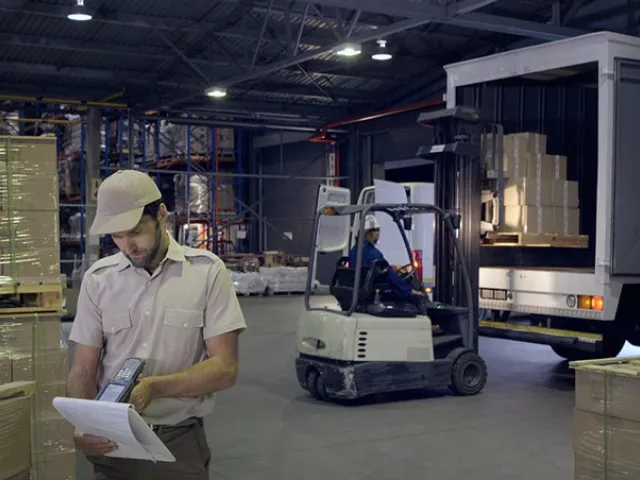Table of contents
With an expected volume of nearly 60 million annual returns and an average of 86,000 verification requests per manufacturer each year1, the November 19, 2019 DSCSA Saleable Returns Verification Requirement will have a huge operational impact on both wholesalers and manufacturers.

A Verification Router Service connects manufacturers and wholesalers
To help distributors and manufacturers minimize the impact of saleable returns on their operations, the HDA Returns Task Force has defined the Verification Router Service (VRS) model to automate verification requests and achieve near real-time request/response performance.
For manufacturers, a VRS automates responses to verification requests from primary wholesalers that do not choose to “self verify” against an internal serial number repository as well as from secondary wholesalers and dispensers that may not have a direct relationship with the manufacturer.
For wholesalers, a VRS ensures that returned products can be verified if a manufacturer is not providing EPCIS data with its shipments or if the status of the product has changed since the original shipment was received, either by a recall, withdrawal, or suspect product investigation. With a VRS, product verification remains with the manufacturer, eliminating the potential liability of self verifying against an internal serial number repository.
How a VRS works
The VRS model provides three basic service components:

- Wholesalers use the requester service to create and submit a verification request and receive the response.
- The router service uses its lookup directory to locate the product information and route the request to the correct source.
- Manufacturers use the responder service to receive the verification request and respond to the requester.
While the HDA task force has established a set of technical guidelines to ensure industry-wide adoption, not all VRS solutions offer equivalent functionality. It’s critical that wholesalers and manufacturers discuss their returns verification requirements with each other, and that they ask solution providers several key questions about their VRS solution:
Is your VRS based on open, interoperable standards?
A wholesaler may publish a verification request using one VRS, but the responding manufacturer may use another. The process relies on the lookup directory, which operates as a phone book that is synchronized across VRSs. Any VRS based on closed, proprietary technologies puts companies at risk of ending up on an island: no other VRS will be able to publish information to or from their lookup directory.
As a leader in interoperable compliance solutions, TraceLink has already completed testing of its VRS with a “Big 3” wholesaler and a major manufacturer to ensure full interoperability and is on schedule to launch its verification solution into the marketplace by November 2018, allowing for a year of customer piloting and testing before the 2019 deadline.
Does your VRS integrate product master data access?
With serialization, the National Drug Code (NDC) number that was previously used to identify a product will be replaced by an encoded Global Trade Item Number (GTIN). With many wholesalers managing in excess of 20,000 prescription drug SKUs, they need up-to-date product master data from manufacturers to ensure GTINs are correct to avoid verification failures.
Only TraceLink’s saleable returns verification solution integrates master data sharing so manufacturers can seamlessly distribute up-to-date master data to direct and indirect trading partners. Wholesalers can access product master data directly from their suppliers and use the VRS to locate a product’s manufacturer and submit a verification request.
Can your VRS meet sub-second performance requirements?
The HDA task force has specified that wholesalers need near real-time responses to verification requests to minimize any disruptions to warehouse operations.
A scalable architecture and partner connectivity are critical to deliver the performance requirements of the HDA VRS model. Only TraceLink’s VRS solution leverages the speed and efficiency of a proven data-sharing platform and more than 650 supplier connections on the TraceLink network to ensure sub-second verification between pharma companies and wholesale distributors.
Can your VRS work with ERP and WMS systems?
Separating saleable returns verification―including partner connectivity, serialized data exchange, and request routing―from everyday business operations is an important benefit of a VRS. But it’s also important that a VRS can integrate with your existing business systems and warehouse scanning solutions to track the status and location of returned products.
TraceLink’s Product Information Manager can be integrated with all leading Level 4 serialization repositories and WMS or ERP business systems. And, to meet the full end-to-end DSCSA requirements for wholesalers, TraceLink’s solution also integrates with TraceLink's IoT-based edge solution for capturing, routing and recording verifications during the returns process.
TraceLink: minimizing the impact, cost, and effort of saleable returns
With out-of-the-box partner connectivity, integrated master data sharing, and proven technology based on open, interoperable standards, TraceLink’s Product Information Manager gives manufacturers and wholesalers a fast track to DSCSA compliance, and is the only solution that combines robust VRS performance with master data sharing for uninterrupted business efficiency.
1 HDA Saleable returns pilot study (2015)





